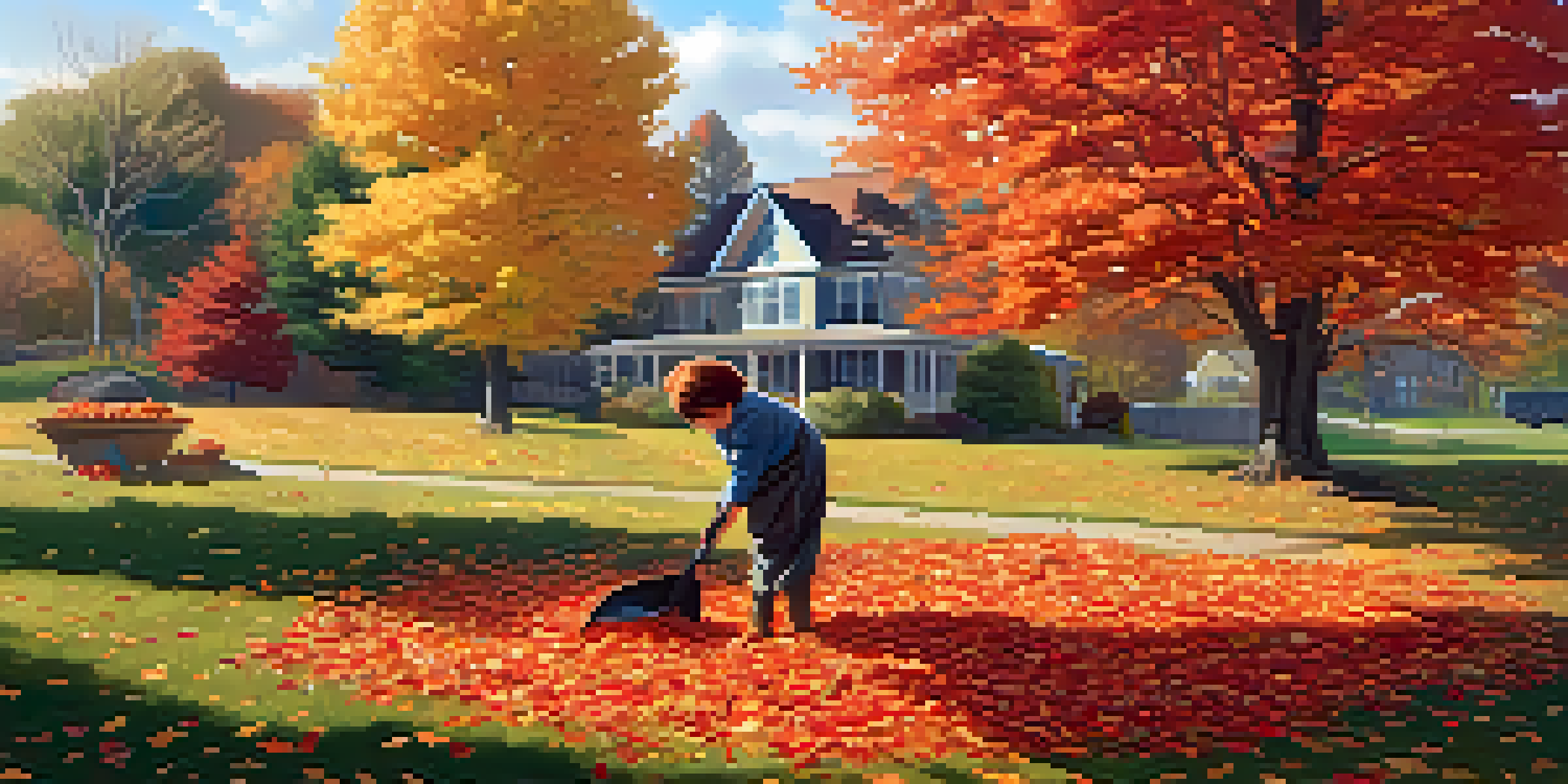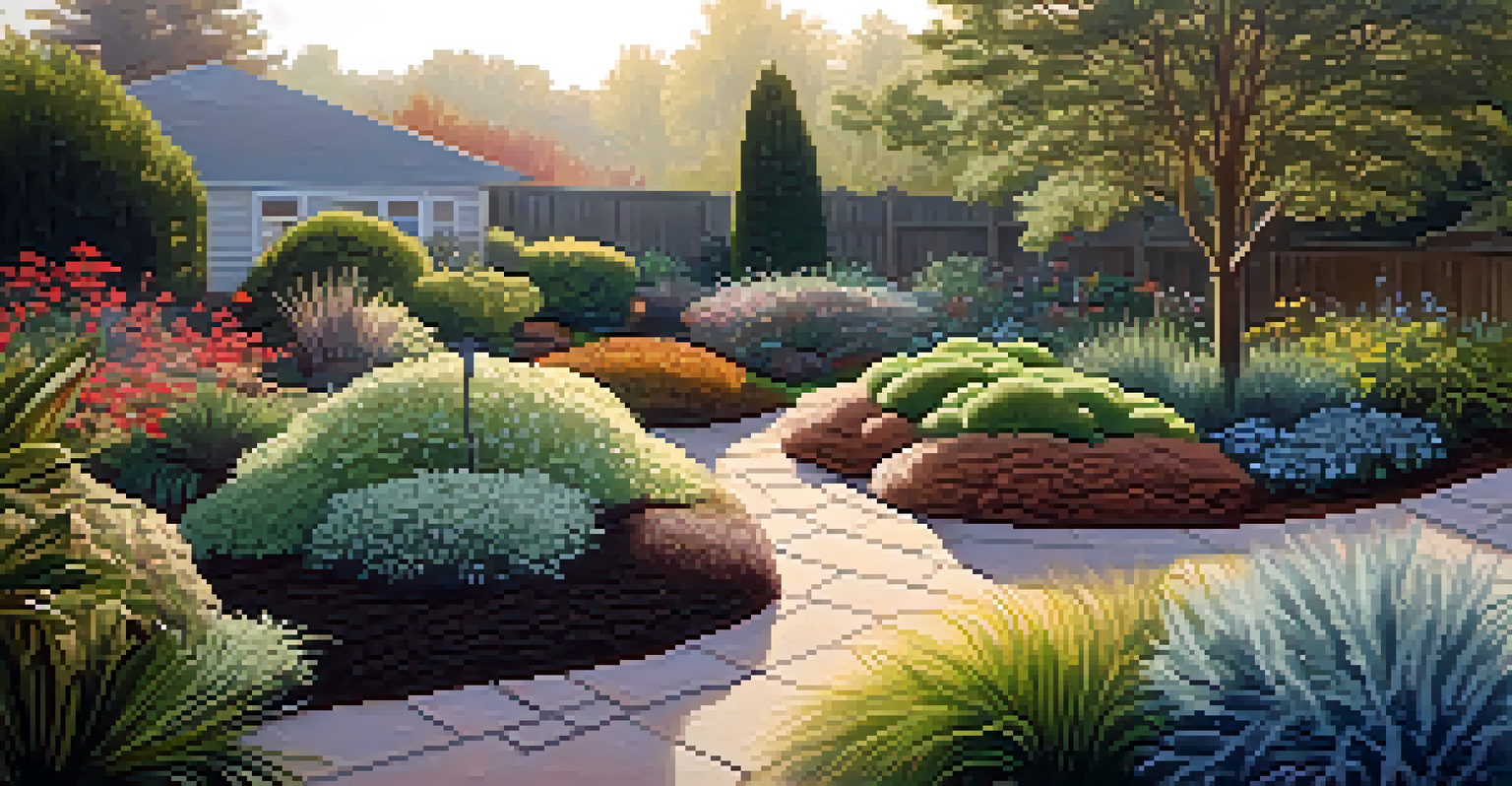Fall Landscaping: Preparing Your Yard for the Winter Months

Why Fall Landscaping is Crucial for Winter Preparation
As the leaves begin to change and temperatures drop, fall landscaping becomes essential. Preparing your yard during this season helps protect your plants and soil from the harsh winter elements. Think of it as giving your garden a warm blanket before the cold sets in.
Autumn is a second spring when every leaf is a flower.
Many homeowners overlook this step, but neglecting fall care can lead to issues come spring. For instance, without proper preparation, your plants might suffer from frost damage or even die before the blooming season begins. By taking time in the fall, you set the stage for a thriving garden next year.
Additionally, fall landscaping can improve your yard's overall aesthetics. With vibrant autumn colors and well-maintained features, your outdoor space can be a beautiful sight, even as winter approaches. So, let’s dive into the steps you can take to prepare your yard for the colder months!
Clean Up Leaves and Debris for a Healthy Yard
One of the first tasks on your fall landscaping checklist should be cleaning up fallen leaves and debris. Leaving leaves on your lawn can lead to mold growth and suffocate the grass underneath, preventing it from thriving come spring. Think of this as giving your yard a fresh start, free of clutter.

Make sure to rake up not just the leaves, but any twigs, branches, and other debris that can hinder your lawn’s health. This clean-up helps prevent pests and diseases that may linger over winter. Plus, it’s a great way to get some fresh air and exercise while enjoying the beautiful autumn weather!
Fall Care Sets Up Spring Success
Proper fall landscaping protects plants and prepares your garden for a thriving spring.
Once you’ve gathered the debris, consider composting it for a nutrient-rich addition to your garden soil. This not only benefits your yard but also reduces waste going to landfills. A win-win for both your garden and the environment!
Aerate Your Lawn for Better Winter Survival
Aeration is a fantastic way to ensure your lawn stays healthy through the winter months. This process involves perforating the soil with holes to allow air, water, and nutrients to penetrate the grassroots. Think of it as giving your lawn a deep breath, helping it to thrive even in challenging conditions.
The best time to plant a tree was twenty years ago. The second best time is now.
When you aerate, you also relieve soil compaction, which can inhibit root growth and water absorption. By breaking up the compacted soil, you create a healthier environment for your grass to flourish. Plus, it helps combat thatch, a layer of dead grass and organic matter that can suffocate your lawn.
For best results, aerate your lawn in early fall when the grass is still actively growing. This timing allows your lawn to recover quickly and prepare for the cold months ahead. It may seem like a bit of work, but your lawn will thank you next spring!
Fertilizing: Giving Your Lawn a Nutrient Boost
Now that your lawn is aerated, it’s time to give it some nourishment. Applying a fall fertilizer is crucial as it provides essential nutrients that will support your grass through the winter months. Think of this step as a hearty meal before a long hibernation!
In fall, look for a fertilizer that is high in potassium, as this helps strengthen roots and improve drought resistance. Applying fertilizer too late in the season can lead to growth that is susceptible to frost, so timing is key. Aim for a window between early September and late October for optimal results.
Prune for Healthier Growth
Pruning trees and shrubs in the fall enhances their resilience and promotes healthy growth.
After fertilizing, be sure to water your lawn lightly to help the nutrients soak in. This simple step can make a significant difference in the health of your lawn when spring arrives, ensuring it comes back lush and green.
Pruning Trees and Shrubs for Winter Resilience
Pruning is another vital task that shouldn’t be overlooked during fall landscaping. Trimming back trees and shrubs not only helps maintain their shape but also promotes healthy growth. Imagine giving your plants a little haircut, removing any dead or weak branches that could become hazardous in winter storms.
By pruning in the fall, you also reduce the risk of disease and pests that can hide in dead wood. This proactive approach means less maintenance in the spring and a healthier garden overall. Whether you’re dealing with fruit trees or ornamental shrubs, a little attention now can yield big rewards later.
However, be cautious about when and how you prune. Avoid trimming spring-blooming shrubs until after they flower, as they set their buds in the fall. For most other plants, late fall is an ideal time to make those cuts!
Protecting Vulnerable Plants from Frost Damage
As temperatures drop, some plants may need extra protection from the impending frost. Tender perennials, young trees, and newly planted shrubs can be particularly vulnerable. Consider using mulch, burlap, or frost cloth to shield these plants from the cold, much like wrapping them in a cozy blanket.
Mulching around the base of these plants can help insulate the ground and retain moisture. Aim for a layer of 2-4 inches of organic mulch for optimal protection. This not only safeguards your plants but also enriches the soil as it breaks down over time.
Protect Plants from Frost Damage
Using mulch and coverings helps shield vulnerable plants from winter frost, ensuring their survival.
If you have container plants, bring them indoors or place them in a sheltered spot. For those that must stay outside, clustering them together can provide added warmth. These simple actions can make a significant difference in plant survival through the winter months.
Winterizing Water Features for Seasonal Safety
If you have water features like ponds or fountains, winterizing them is crucial to prevent damage during freezing temperatures. Start by removing any debris, such as leaves or algae, to keep the water clean and healthy. This is similar to cleaning out your gutters before a big storm; a little preparation goes a long way!
For ponds, consider using a pond heater or aerator to keep a portion of the surface from freezing solid. This helps maintain oxygen levels and prevents harmful gases from building up. If you have a fountain, draining it and storing any removable parts will help prolong its life and prevent cracking.

Taking these steps not only protects your investment but also ensures that your water feature remains a beautiful focal point come spring. Plus, it gives you peace of mind knowing you’ve done everything possible to safeguard your yard.